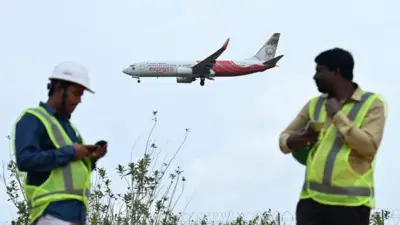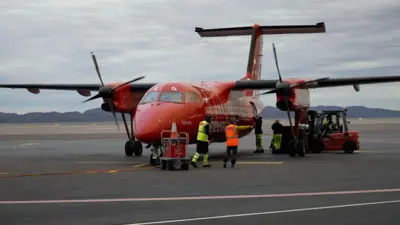We've updated our Privacy and Cookies Policy
We've made some important changes to our Privacy and Cookies Policy and we want you to know what this means for you and your data.
SpaceX launch completes Iridium satellite refresh
Image source, SPACEX
- Author, Jonathan Amos
- Role, ΒιΆΉΤΌΕΔ Science Correspondent
Ten spacecraft have launched from California to complete the $3bn refurbishment of the original .
A carried the platforms aloft. They will go live in the network in the coming weeks.
The original Iridium constellation was put up in the late 90s to link calls to any location on the planet.
This function will continue, but the new satellites carry some add-ons to support additional services.
One is monitoring technology to surveil the movements of planes.
The UK's air traffic management company, , and its Canadian equivalent, , plan to use the new capability to transform the routing of aircraft across the North Atlantic.
Friday's Falcon launch was the eighth in a series of missions that have put a total of 75 state-of-the-art spacecraft in orbit.
Only 66 interlinked platforms are actually required to run the network, so the extra nine will act as spares.
The Iridium service seemed a marvel when first introduced.
With a chunky phone, it was possible to make and take calls anywhere - in deserts, up high mountains and even at the poles. However, the initial company couldn't pay back its development loans and went bust.
The entity that emerged, freed from this debt, has since built a strong business. It now has more than a million subscribers.
Connected world
Much of this business still revolves around phone calls, but a rapidly growing segment is centred on the relay of simple status messages from connected equipment, such as vehicles and industrial equipment. What technologists sometimes call IoT - the Internet of Things.
Being able to operate a totally refreshed constellation would take the company to a new level, said CEO Matt Desch.
"It means our network will finally achieve the financial independence and security that makes a satellite operator secure and successful, and creates a lot of opportunities for us that we've never had before," he told reporters.
"This is a big deal for our customers, our partners and frankly for the industry itself."
Image source, Getty Images
One of those new opportunities is the receiver that will pick up the Automatic Dependent Surveillance-Broadcast (ADS-B) messages pumped out by aircraft.
Twice a second, planes will report their position, speed and direction using ADS-B transponders.
Already this information is assisting the monitoring and management of air space over land, and the satellite receivers are set to have a major impact over the oceans where aeroplanes are beyond the sight of radar.
The North Atlantic, for example, is one of the busiest traffic corridors in the world, handling about 550,000 movements a year. But the current lack of real-time visibility means flights must follow regimented tracks, maintaining a separation from the nearest aircraft of 23-40 nautical miles.
"What space-based ADS-B will allow us to do is reduce the separation standard to 15 nautical miles (in line and to the side)," explained NATS safety director, Alastair Muir.
"It increases the capacity but more importantly also enables a whole raft of safety and other benefits for our customers in respect of greater fuel efficiency, and then obviously CO2 emissions."
Aircraft alerts
Iridium has set up a company called Aireon to look after its ADS-B services, and NATS has taken an equity share in this business.
One of the services is GlobalBeacon, an alert system for airlines to tell them if a plane in their fleet has started to deviate from its planned route.
Malaysia Airlines, which lost sight of MH370 in mysterious circumstances in 2014, will be a subscriber.
A good number of large planes are already fitted with ADS-B transponders but American and European regulators have set 2020 as a hard deadline for those that don't yet have them to get them fitted.
"We are on average receiving 13 billion aircraft position messages per month and are expecting once the system is fully operational after this last launch to receive over 25 billion per month," said Don Thoma, Aireon's CEO.
Jonathan.Amos-INTERNET@bbc.co.uk and follow me on Twitter:
Top Stories
More to explore
Most read
Content is not available








